Are you ready to unlock the incredible potential of your body, sculpt your physique, and embark on a journey towards becoming the fittest version of yourself?
If you’re curious about how to power your body through bodyweight workouts or calisthenics, you’re in the right place.
Our 7-Day Beginner Calisthenics Meal Plan is your passport to a world where your body becomes the ultimate gym, and your meals are the fuel that propels you through each exhilarating exercise.
It’s time to redefine your fitness journey with delicious, nutritious, and bodyweight workout-enhancing meals.
Let’s take that first step towards a healthier, stronger you.
Why Nutrition Matters in Calisthenics
In the electrifying world of calisthenics, where every move and muscle fiber counts, you might wonder, “Why does nutrition even matter?”
Well, let me tell you, my fellow bodyweight workout enthusiast, that what you put on your plate plays a starring role in your calisthenics journey.
It’s not just about doing those awe-inspiring handstands, push-ups, or pull-ups; it’s about what your body needs to perform these gravity-defying feats.
Research from the American College of Sports Medicine underlines the critical role of nutrition in enhancing exercise performance and expediting recovery.
It’s not just about the sweat and effort you put in; it’s about the fuel you provide for your body to power through those demanding bodyweight routines.
Think about it this way: you wouldn’t fill up a high-performance sports car with subpar fuel and expect it to win a race, would you?
Your body is no different. It’s your vehicle to conquer calisthenics challenges, and it needs premium fuel to perform at its peak.
That premium fuel is the right blend of nutrients that not only sustains your energy but also aids in muscle recovery and growth.
We’re not talking about complicated dietary jargon or rigid eating plans; we’re talking about giving your body what it needs in a way that’s sustainable and enjoyable.
So, whether you’re mastering the art of the one-arm push-up or aiming for that impressive front lever, understanding the role of nutrition in calisthenics is your first step toward achieving those jaw-dropping feats.
So, let’s dig in and uncover the secrets behind why nutrition is the unsung hero of your bodyweight workout journey.
Together, we’ll ensure you’re not just exercising but fueling your body for greatness.
Crafting Your Beginner’s Meal Plan
You’ve taken the first step toward becoming a calisthenics warrior, and we’re here to help you chart the course – starting with a meticulously crafted meal plan that will power your body through the demanding world of bodyweight workouts.
Why does a meal plan matter in calisthenics? Think of it as the architectural blueprint for your success.
Just like a skilled architect designs a sturdy and functional building, you must design a calisthenics meal plan that ensures your body is adequately fueled to perform the incredible feats of strength, balance, and endurance that calisthenics demands.
Understanding the significance of nutrition in calisthenics is not a mere suggestion but a scientifically-backed fact.
According to research from the American Council on Exercise, proper nutrition plays a pivotal role in supporting and enhancing physical performance, making it an integral part of your bodyweight workout journey.
Finding Your Daily Caloric Needs
Imagine this: Your body is the high-performance engine of a finely-tuned sports car. To make it run smoothly and efficiently, you need to know how much fuel it requires.
Your age, weight, and activity level are the determining factors that dictate your body’s daily energy needs.
To get an estimate of your daily calorie requirements, you can use this Calorie Calculator. It’s a powerful tool that will give you insight into your unique energy needs, providing you with a solid foundation for building your meal plan.
The Power of Protein
Now, let’s talk about the MVP (Most Valuable Player) of our meal plan – protein. In the world of calisthenics, protein is your closest ally.
It’s the nutrient responsible for repairing and building muscle, ultimately making you stronger, more resilient, and leaner.
The Journal of the International Society of Sports Nutrition emphasizes the critical role of protein in exercise and muscle development, underscoring that it’s not just about how much you exercise, but also about how you nourish your body.
So, as you embark on this epic journey into bodyweight workouts, remember that your meal plan is not just a list of foods.
It’s the strategic playbook that will ensure your body receives the right nutrients in the right proportions, fueling your strength, endurance, and overall well-being.
Your voyage into the world of calisthenics has only just begun, and your meal plan is your trusted ally on the path to greatness.
Let’s roll up our sleeves and start crafting the perfect fuel for your extraordinary journey.
Pre-Workout and Post-Workout Nutrition
You’ve laced up your sneakers, you’re pumped up for your bodyweight exercises, and we’re here to ensure that your body gets the fuel it needs for optimal performance and recovery.
But why do pre-workout and post-workout nutrition matter in the realm of bodyweight workouts? Think of it as preparing your vehicle for an exciting road trip.
Before you hit the road, you make sure it’s fueled up and ready to go.
The same principle applies to your body; it needs the right nutrients at the right time to tackle those gravity-defying moves and recover like a champ.
Research from the Journal of Strength and Conditioning Research underscores the significance of nutrition timing in enhancing exercise performance and recovery in bodyweight workouts, making it an essential aspect of your calisthenics journey.
Fueling Up Before Your Workout
Imagine your pre-workout meal as the fuel that fires up your engine.
To ensure you have the energy to tackle your bodyweight exercises with enthusiasm, opt for a balanced meal that combines carbohydrates and proteins.
Reputable Source: According to the Annals of Internal Medicine, consuming a light meal 1-2 hours before exercise is ideal, providing the necessary energy for your workout.
Replenishing After the Burn
Once you’ve conquered your bodyweight workout, your muscles are hungry for recovery. This is where your post-workout nutrition kicks in.
A combination of carbohydrates and protein will help your body repair and refuel, ensuring you’re ready for your next workout.
The Journal of the International Society of Sports Nutrition emphasizes the importance of post-workout nutrition in promoting muscle recovery and growth.
So, whether you’re mastering handstands, conquering those one-arm push-ups, or unlocking the secrets of the human flag, remember that pre-workout and post-workout nutrition isn’t just a routine – it’s a key ingredient in your recipe for success.
Your bodyweight workout journey is about more than just sweat and strength; it’s about timing and nourishment.
Balancing Macronutrients
If you’ve ever wondered about the secret sauce behind achieving those impressive handstands, push-ups, or pull-ups, you’re about to find out that it’s not just about the moves; it’s about what you eat and how you balance those essential macronutrients.
But why do macronutrients matter in the context of bodyweight workouts? Well, think of your body as a finely tuned instrument.
To create beautiful music, you need the right notes in the right proportions.
The same goes for your body; it needs the right mix of macronutrients to perform at its best during those intense bodyweight exercises.
Research from the Journal of the International Society of Sports Nutrition underscores the importance of macronutrient balance in supporting physical performance and muscle growth in the context of bodyweight workouts.
Protein: Your Muscle’s Best Friend
Let’s start with the star of the show: Protein. When you’re mastering bodyweight workouts, your muscles are your biggest assets, and protein is the key to nurturing and growing them.
It’s like the building blocks for your body’s lean muscle.
According to the Journal of the International Society of Sports Nutrition, protein is a critical component for muscle development and recovery, which is essential in bodyweight workouts.
Carbs: Your Energy Source
Next up, we have carbohydrates, your body’s primary energy source.
These little wonders keep you energized during your workouts and help you power through those challenging bodyweight exercises.
The British Journal of Sports Medicine highlights the importance of carbohydrates in providing sustained energy during exercise.
Fats: The Unsung Heroes
Don’t forget the unsung heroes, fats. Healthy fats play a vital role in your overall well-being.
They support various bodily functions, including hormone production and absorption of essential vitamins.
So, as you embark on your bodyweight workout journey, remember that it’s not just about how much you exercise but also about what you eat and how you balance your macronutrients.
Your body is a masterpiece, and the macronutrients are the paints that bring it to life.
7-Day Beginner Calisthenics Meal Plan
Embarking on your calisthenics adventure is a thrilling step toward strength, flexibility, and overall fitness.
But, as they say, the journey is as important as the destination. That’s where a well-thought-out meal plan comes into play.
It’s your roadmap to success, providing your body with the nutrients it needs to conquer those bodyweight workouts and achieve your fitness goals.
Before we dive into the meal plan, remember this: What you eat fuels your body, and the right nutrition can be your secret weapon for mastering bodyweight exercises.
Day 1
Breakfast: Scrambled Eggs with Spinach
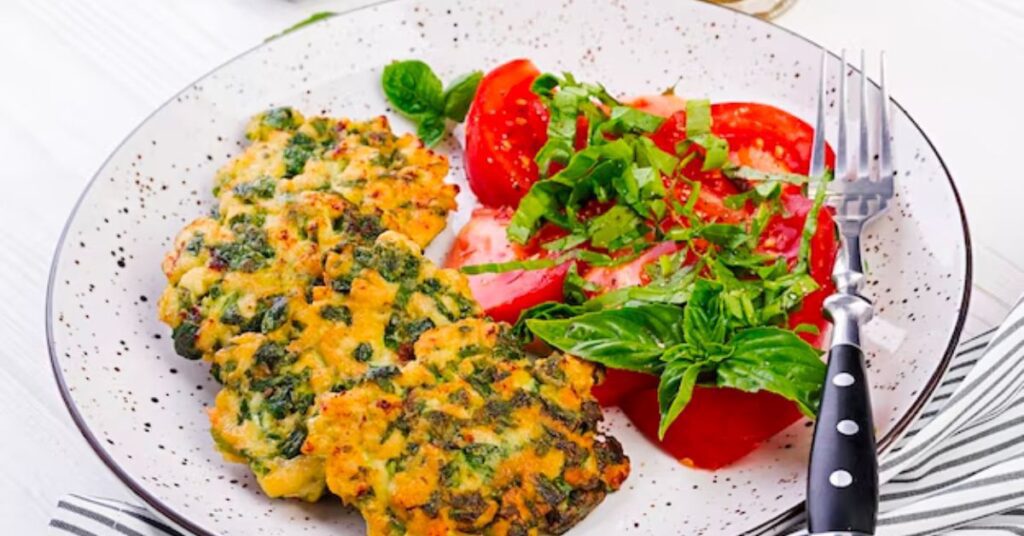
Ingredients:
- 2 eggs
- A handful of fresh spinach
- Salt and pepper to taste
Instructions:
- Whisk the eggs in a bowl.
- Heat a non-stick pan over medium heat.
- Add the spinach and cook for a minute.
- Pour the eggs over the spinach.
- Cook until the eggs are set.
- Season with salt and pepper.
Lunch: Grilled Chicken Salad
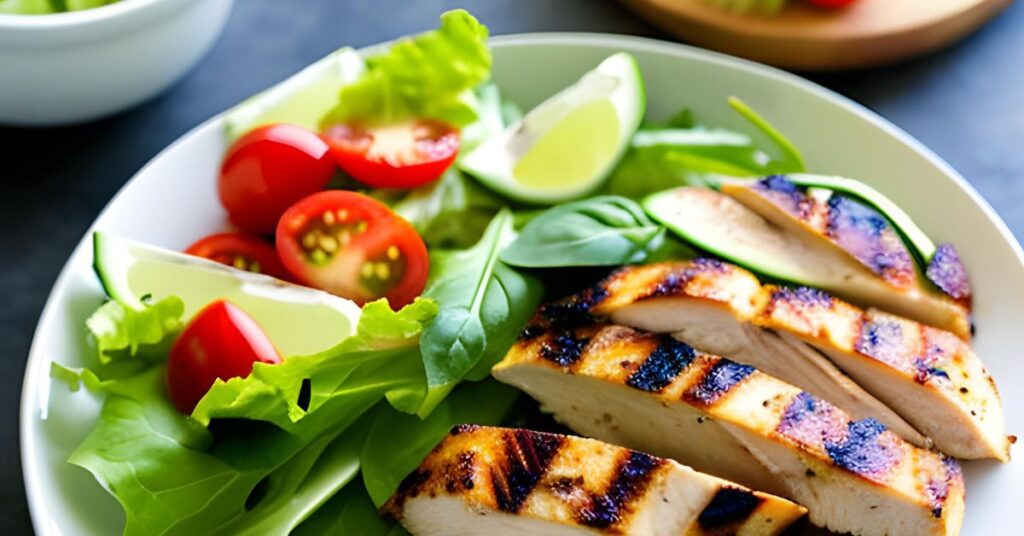
Ingredients:
- Grilled chicken breast
- Mixed greens
- Cherry tomatoes
- Balsamic vinaigrette dressing
Instructions:
- Slice the grilled chicken breast.
- Toss it with mixed greens and cherry tomatoes.
- Drizzle with balsamic vinaigrette dressing.
Dinner: Baked Salmon with Quinoa
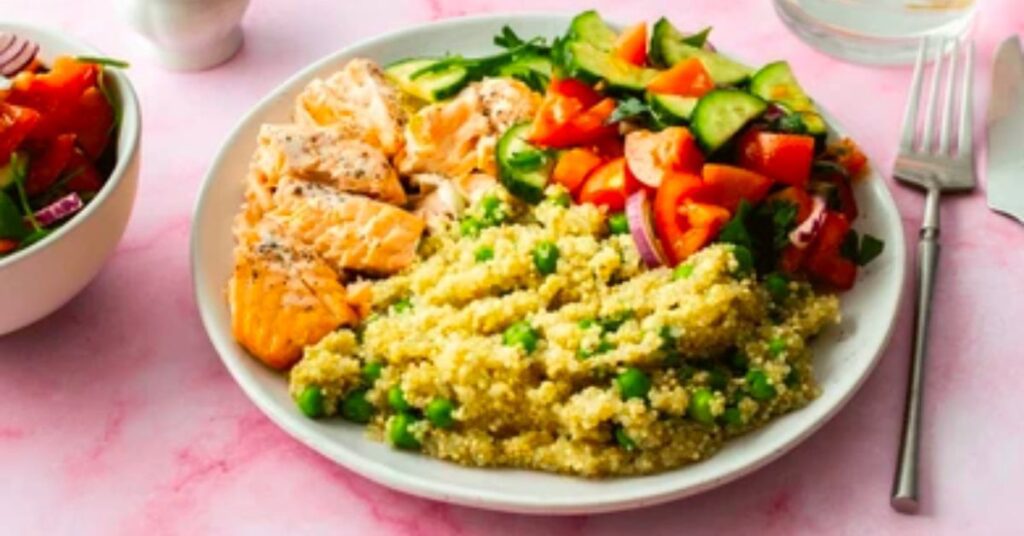
Ingredients:
- Salmon fillet
- Quinoa
- Steamed broccoli
- Lemon juice
- Olive oil
- Salt and pepper
Instructions:
- Season the salmon with lemon juice, olive oil, salt, and pepper.
- Bake until the salmon flakes easily.
- Serve with cooked quinoa and steamed broccoli.
Snack: Greek Yogurt with Berries
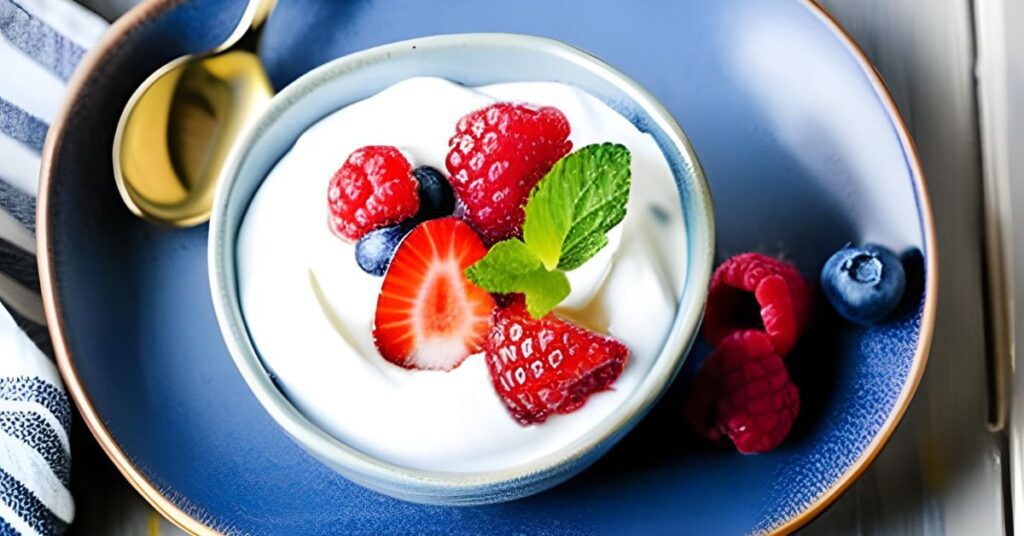
Ingredients:
- Greek yogurt
- Fresh berries (e.g., blueberries, strawberries, raspberries)
Instructions:
- Take a serving of Greek yogurt and place it in a bowl.
- Wash and prepare the fresh berries.
- Top the Greek yogurt with a generous amount of fresh berries.
- Mix them together or enjoy in layers.
- It’s a simple, protein-rich snack with a burst of fruity goodness!
Day 2
Breakfast: Oatmeal with Almonds and Honey
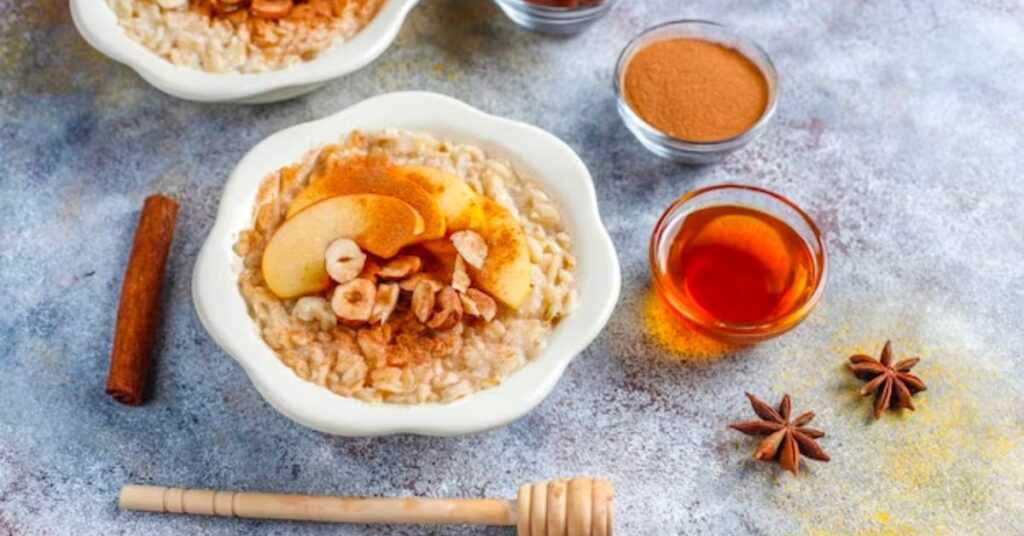
Ingredients:
- Rolled oats
- Almonds
- Honey
Instructions:
- Cook the rolled oats as per the package instructions.
- Top with sliced almonds and a drizzle of honey.
Lunch: Turkey and Avocado Wrap
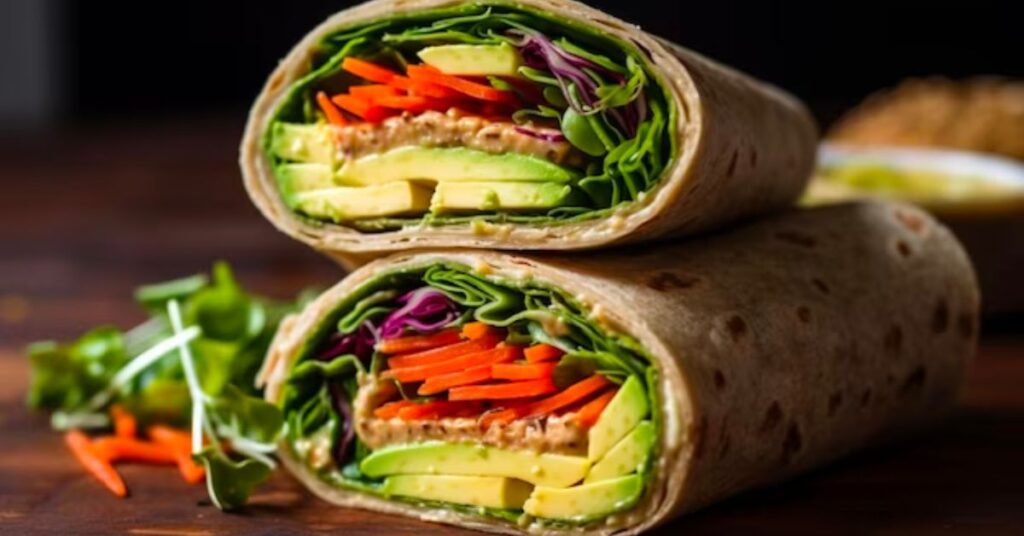
Ingredients:
- Whole-grain tortilla
- Sliced turkey
- Sliced avocado
- Leafy greens
- Mustard or light mayonnaise (optional)
Instructions:
- Lay out the tortilla.
- Layer on the turkey, avocado, and leafy greens.
- Add a touch of mustard or light mayonnaise if desired.
- Roll it up and enjoy!
Dinner: Chickpea and Vegetable Stir-Fry

Ingredients:
- Chickpeas
- Mixed vegetables (bell peppers, broccoli, carrots, etc.)
- Soy sauce or teriyaki sauce
- Cooked brown rice
Instructions:
- In a wok or skillet, stir-fry the mixed vegetables until tender.
- Add chickpeas and a dash of soy sauce or teriyaki sauce.
- Serve over cooked brown rice.
Snack: Sliced Cucumbers with Hummus
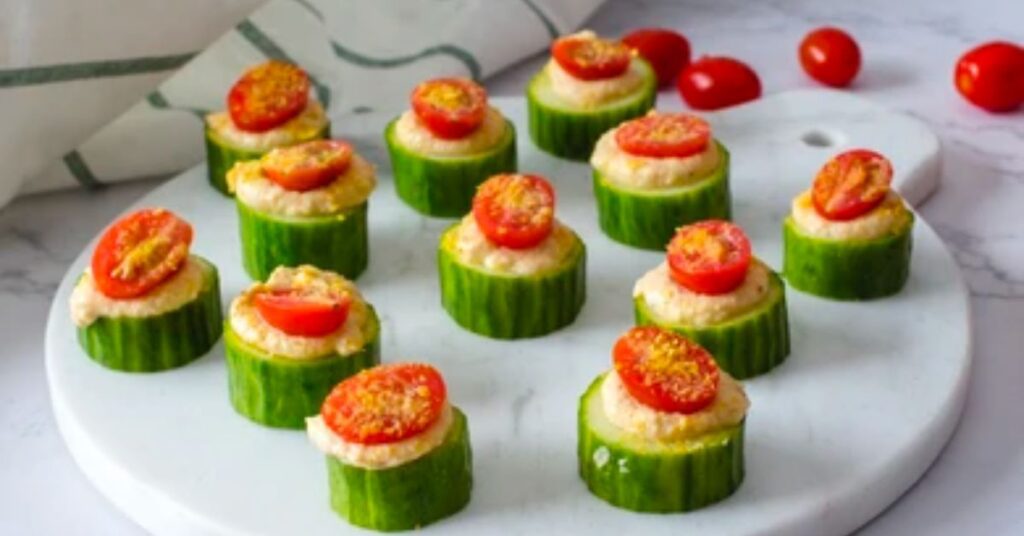
Ingredients:
- Fresh cucumbers
- Hummus (store-bought or homemade)
- Lemon juice (optional)
- Salt and pepper (optional)
Instructions:
- Wash and slice fresh cucumbers into thin rounds or sticks.
- Arrange the cucumber slices on a plate.
- Serve with a side of hummus for dipping.
- If desired, squeeze a bit of fresh lemon juice over the cucumbers and season with salt and pepper for extra flavor.
- This snack offers a refreshing crunch with a creamy dip.
Day 3
Breakfast: Whole-Grain Pancakes with Blueberries
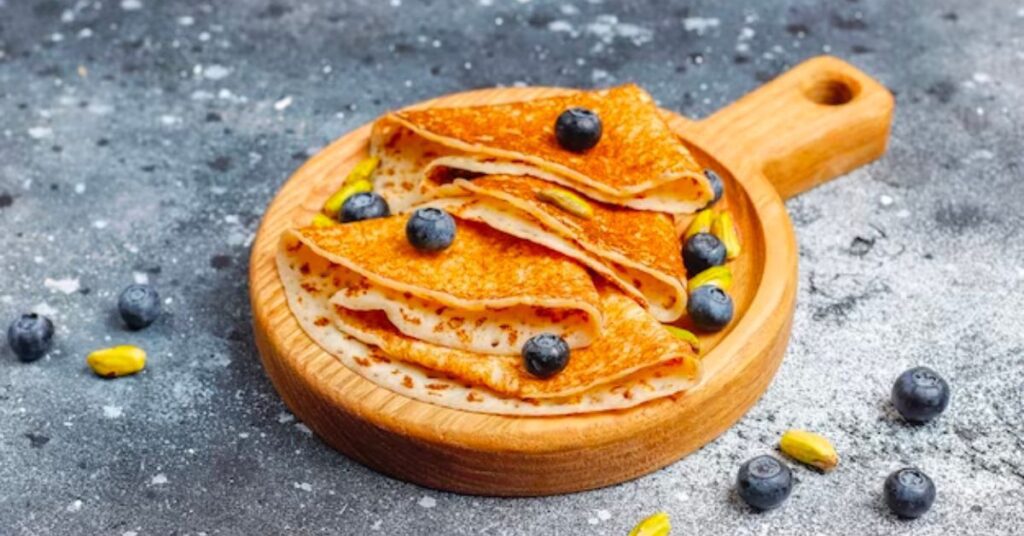
Ingredients:
- Whole-grain pancake mix
- Fresh blueberries
- Maple syrup (optional)
Instructions:
- Prepare pancakes as directed on the package.
- Top with fresh blueberries and a drizzle of maple syrup if desired.
Lunch: Tuna Salad
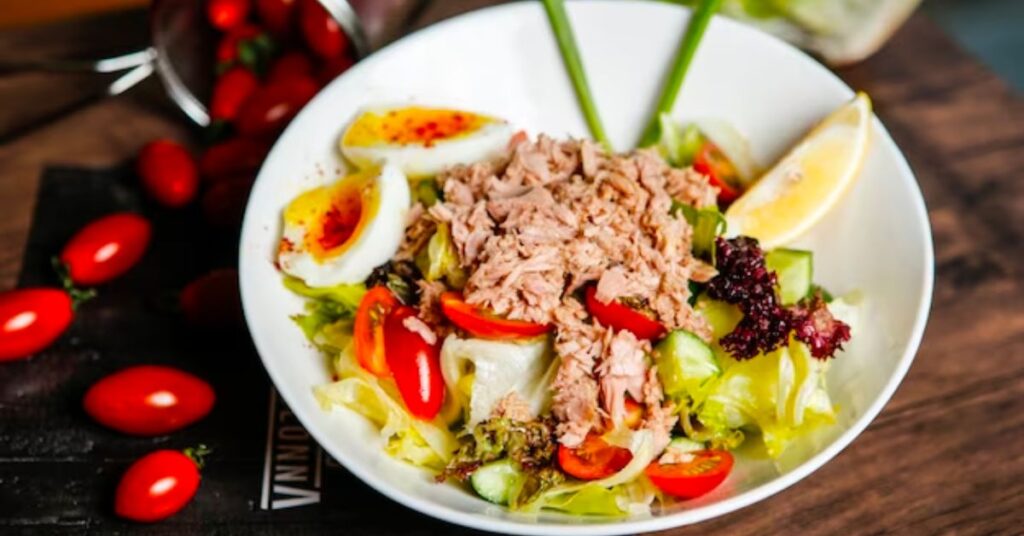
Ingredients:
- Canned tuna
- Mixed greens
- Cherry tomatoes
- Olive oil and balsamic vinaigrette dressing
Instructions:
- Drain the canned tuna.
- Toss it with mixed greens and cherry tomatoes.
- Drizzle with olive oil and balsamic vinaigrette dressing.
Dinner: Grilled Shrimp with Brown Rice
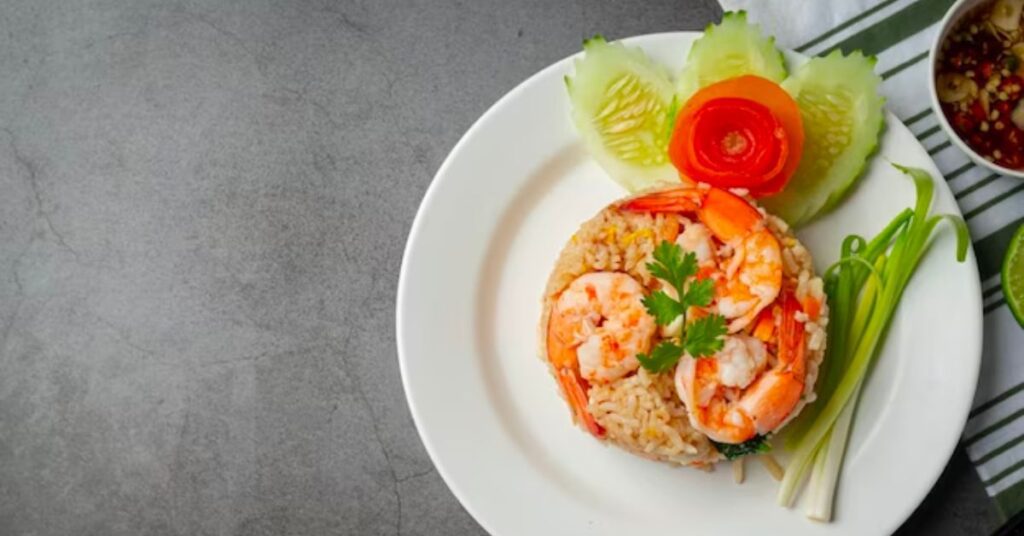
Ingredients:
- Shrimp
- Cooked brown rice
- Sautéed spinach
Instructions:
- Grill the shrimp until they’re pink and slightly charred.
- Serve over a bed of cooked brown rice with sautéed spinach on the side.
Snack: Sliced Apples with Peanut Butter
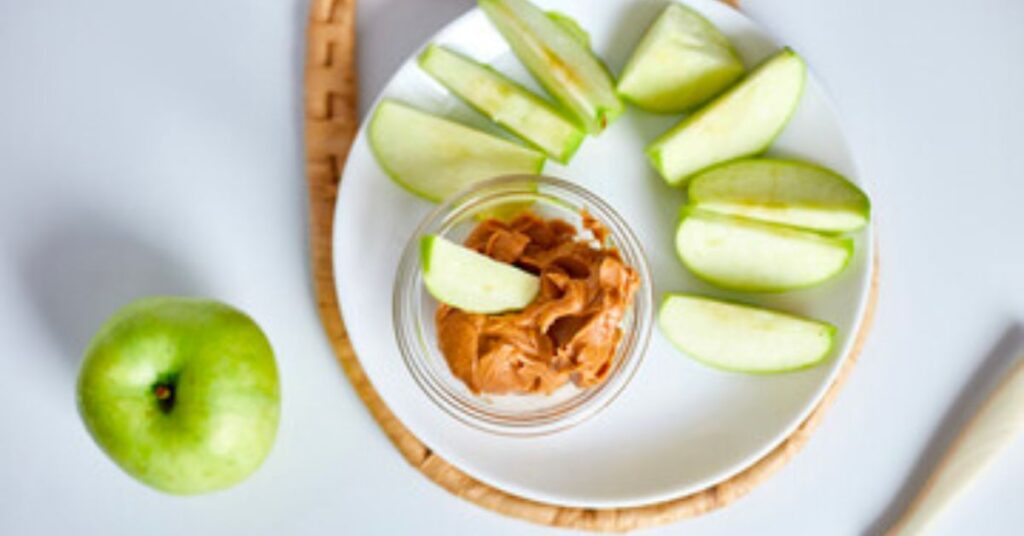
Ingredients:
- Fresh apples
- Peanut butter (or almond butter if preferred)
Instructions:
- Wash and slice fresh apples into thin wedges.
- Serve with a side of peanut butter for dipping.
- Simply dip an apple slice into the peanut butter and enjoy the delightful combination of sweet and nutty flavors.
- It’s a classic and satisfying snack.
Day 4
Breakfast: Greek Yogurt with Granola and Banana
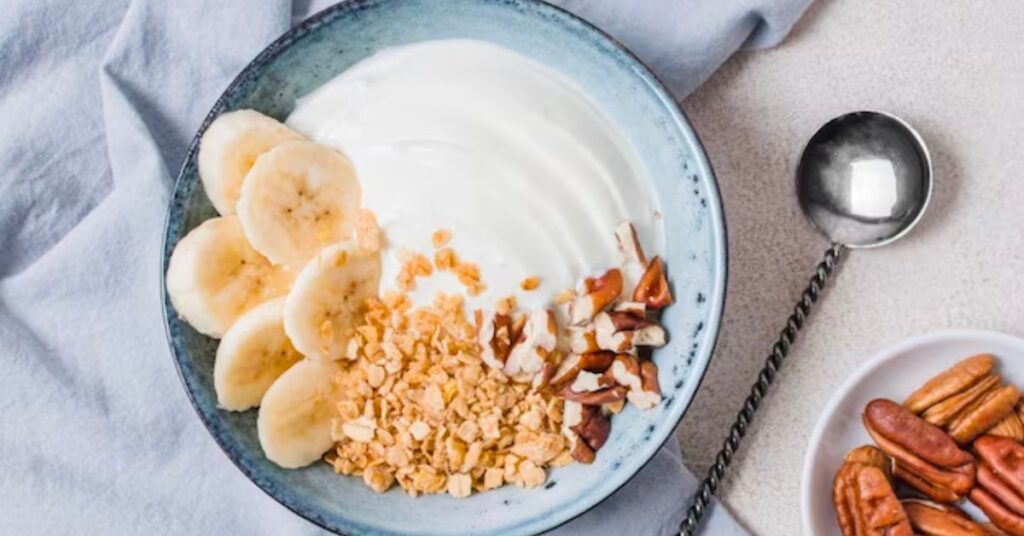
Ingredients:
- Greek yogurt
- Granola
- Sliced banana
Instructions:
- Layer Greek yogurt with granola and sliced banana in a bowl.
Lunch: Quinoa and Black Bean Salad
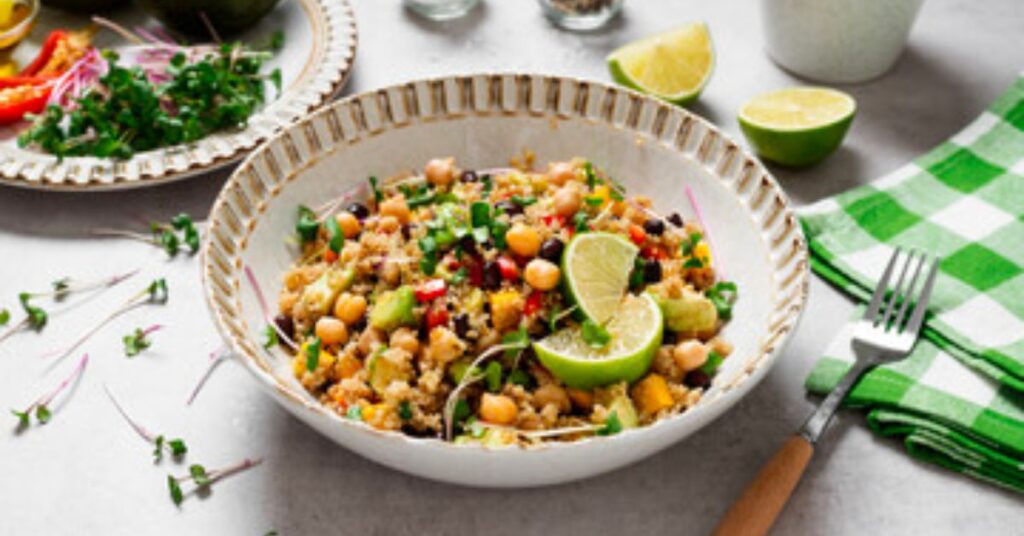
Ingredients:
- Cooked quinoa
- Black beans
- Chopped bell peppers
- Lime vinaigrette dressing
Instructions:
- Combine quinoa, black beans, and chopped bell peppers.
- Drizzle with lime vinaigrette dressing and toss.
Dinner: Baked Chicken Thighs with Sweet Potatoes
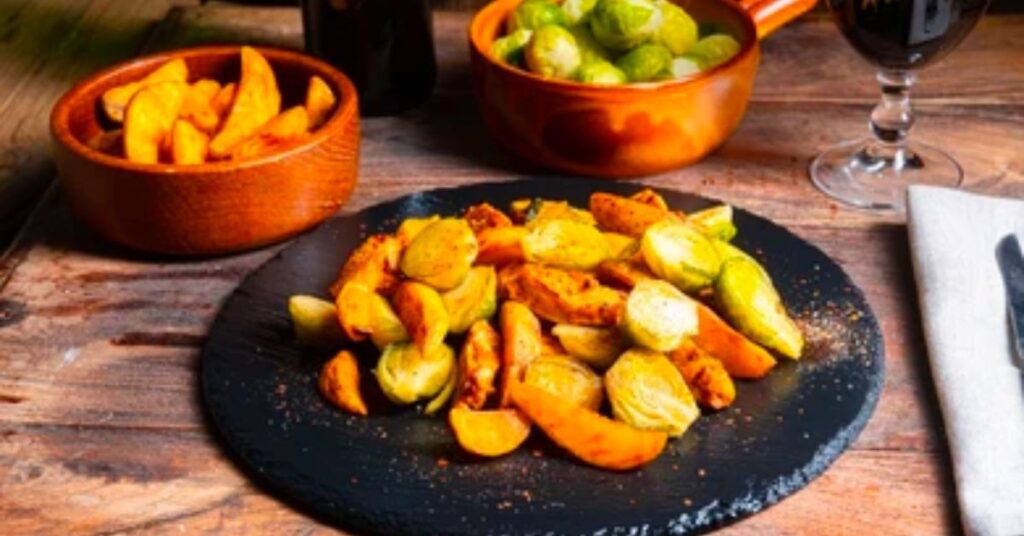
Ingredients:
- Chicken thighs
- Sweet potatoes
- Olive oil, garlic, and rosemary
Instructions:
- Season chicken thighs with olive oil, garlic, and rosemary.
- Bake until chicken is cooked through and sweet potatoes are tender.
Snack: Carrot Sticks with Hummus
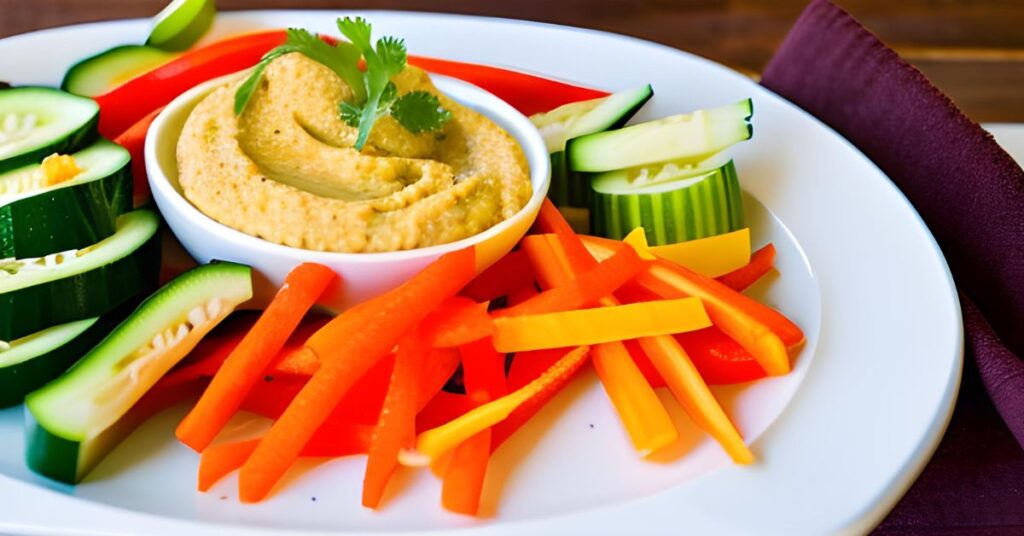
Ingredients:
- Fresh carrots
- Hummus (store-bought or homemade)
- Salt and pepper (optional)
Instructions:
- Wash and peel fresh carrots.
- Cut the carrots into sticks or slices.
- Serve the carrot sticks with a side of hummus for dipping.
- If desired, season with a pinch of salt and pepper for extra flavor.
- Enjoy this crunchy and nutritious snack!
Day 5
Breakfast: Scrambled Tofu with Spinach
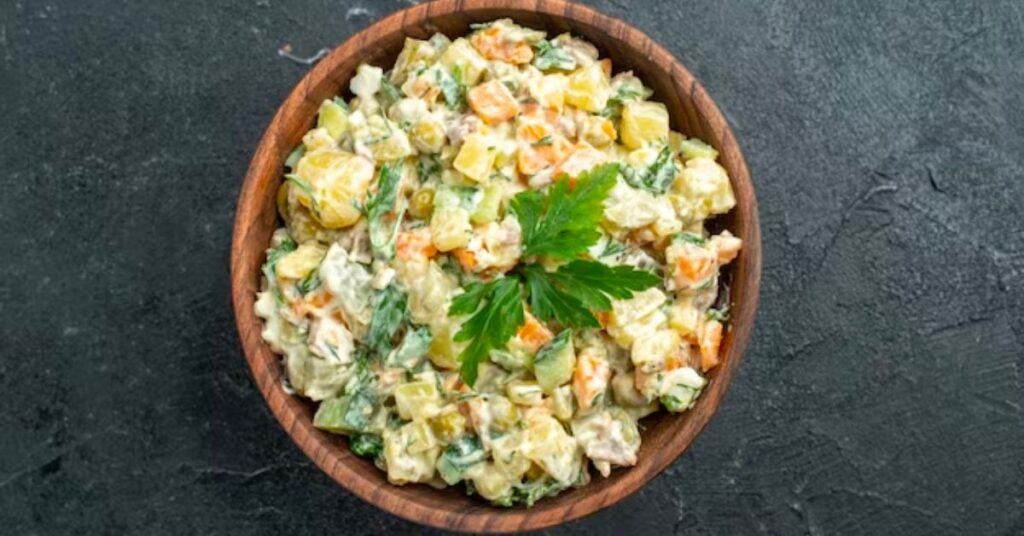
Ingredients:
- Tofu
- Fresh spinach
- Onion and garlic
- Turmeric (for color)
- Salt and pepper
Instructions:
- Crumble tofu into a bowl.
- Sauté diced onion and garlic in a pan until they’re translucent.
- Add the crumbled tofu, turmeric, salt, and pepper. Cook until heated through.
- Add fresh spinach and cook until wilted.
Lunch: Spinach and Feta Stuffed Chicken Breast
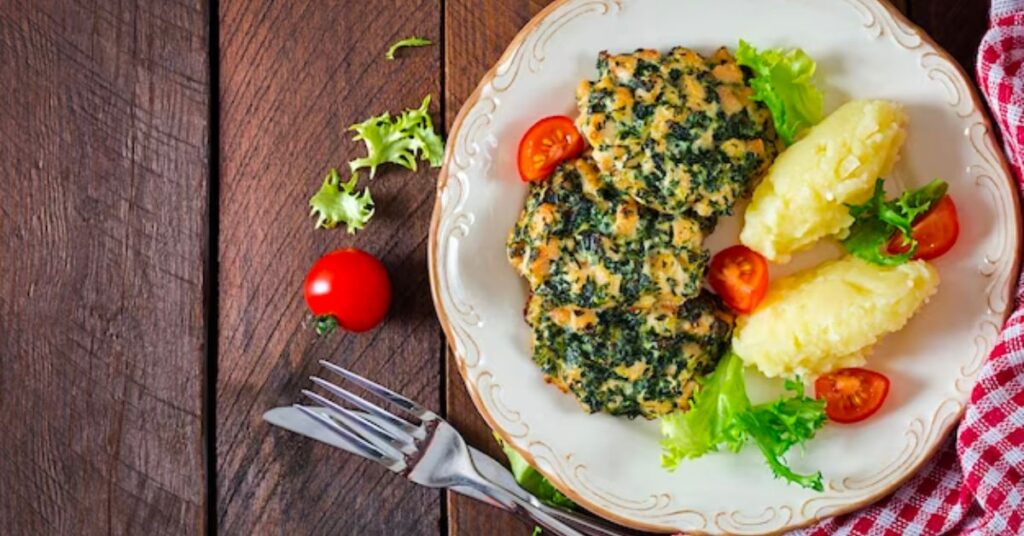
Ingredients:
- Chicken breast
- Fresh spinach
- Feta cheese
- Olive oil, lemon juice, and spices
Instructions:
- Butterfly the chicken breast.
- Stuff with fresh spinach and feta cheese.
- Drizzle with olive oil, lemon juice, and your favorite spices.
- Bake until the chicken is cooked.
Dinner: Baked Cod with Asparagus
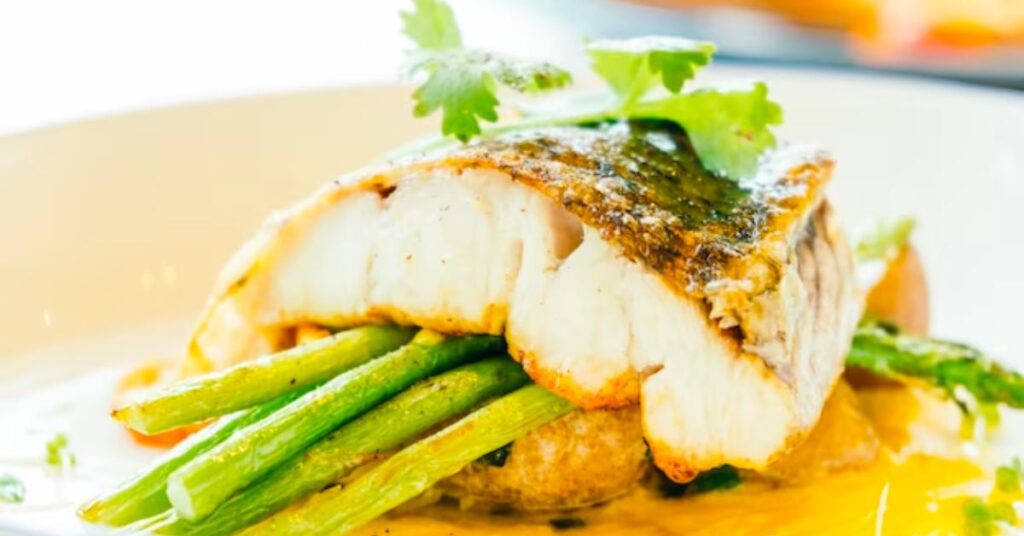
Ingredients:
- Cod fillet
- Asparagus
- Lemon juice, garlic, and herbs
Instructions:
- Season the cod with lemon juice, garlic, and your choice of herbs.
- Place asparagus on a baking sheet and top with the cod.
- Bake until the cod flakes easily.
Snack: Mixed Nuts
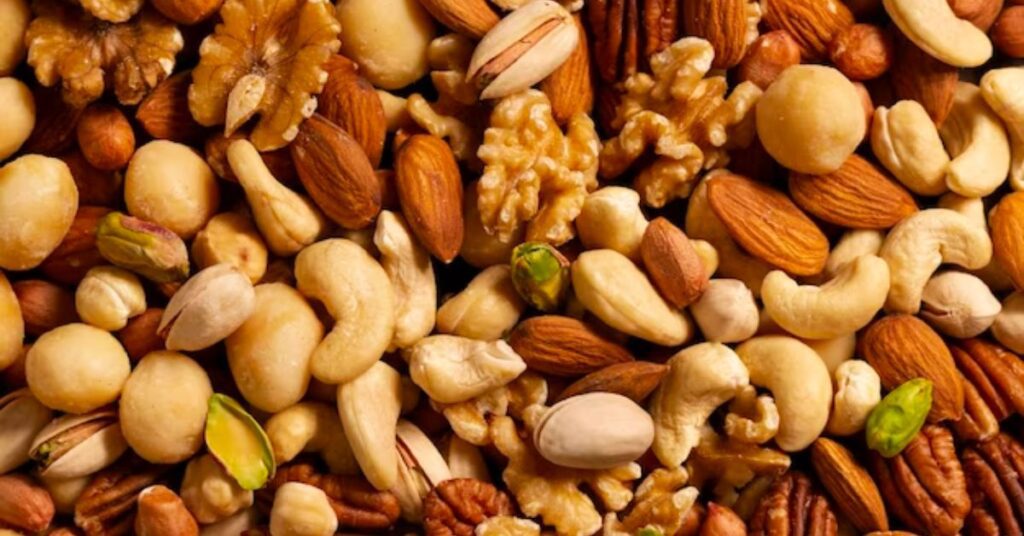
Ingredients:
- Assorted mixed nuts (e.g., almonds, walnuts, cashews)
Instructions:
- Simply grab a handful of your favorite mixed nuts.
- No additional preparation is needed.
- Enjoy this nutrient-dense and satisfying snack that provides healthy fats and protein.
Day 6
Breakfast: Protein Smoothie
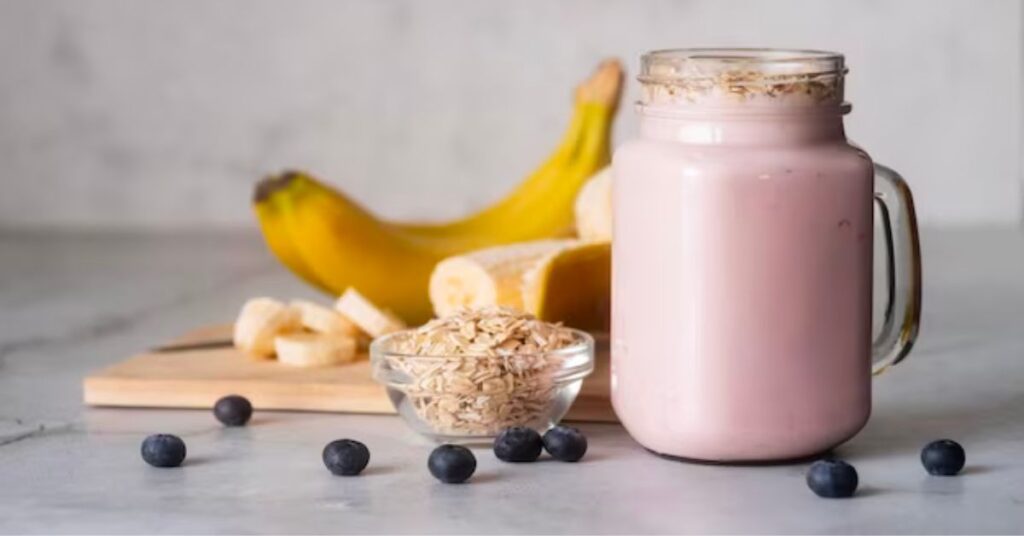
Ingredients:
- Protein powder
- Banana
- Almond milk
Instructions:
- Blend protein powder, a banana, and almond milk until smooth.
Lunch: Lentil Soup
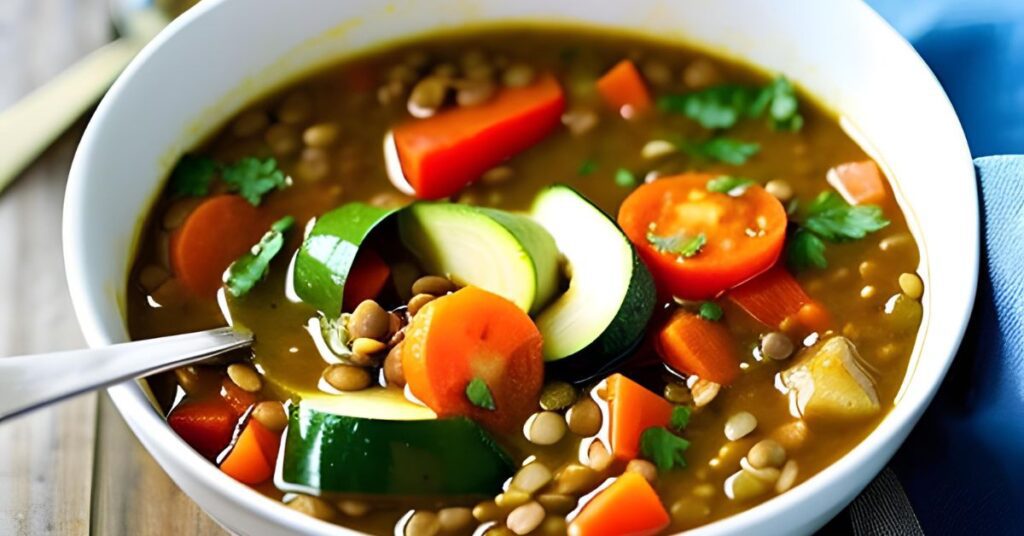
Ingredients:
- Cooked lentils
- Mixed vegetables
- Vegetable broth
- Spices
Instructions:
- Simmer cooked lentils, mixed vegetables, vegetable broth, and spices for a hearty soup.
Dinner: Grilled Portobello Mushrooms with Quinoa
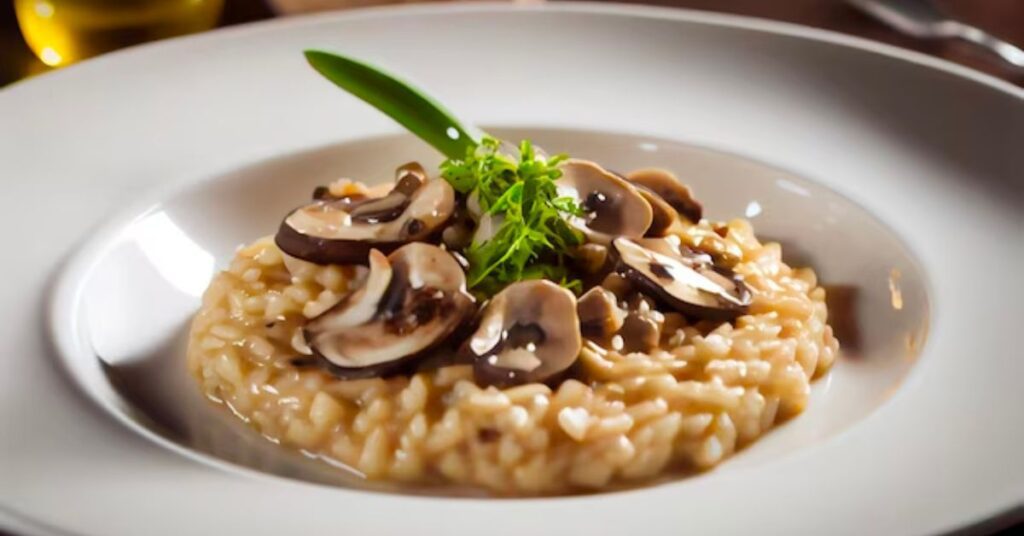
Ingredients:
- Portobello mushrooms
- Quinoa
- Balsamic vinegar and olive oil
Instructions:
- Marinate Portobello mushrooms in balsamic vinegar and olive oil.
- Grill until tender.
- Serve over cooked quinoa.
Snack: Sliced Peppers with Guacamole
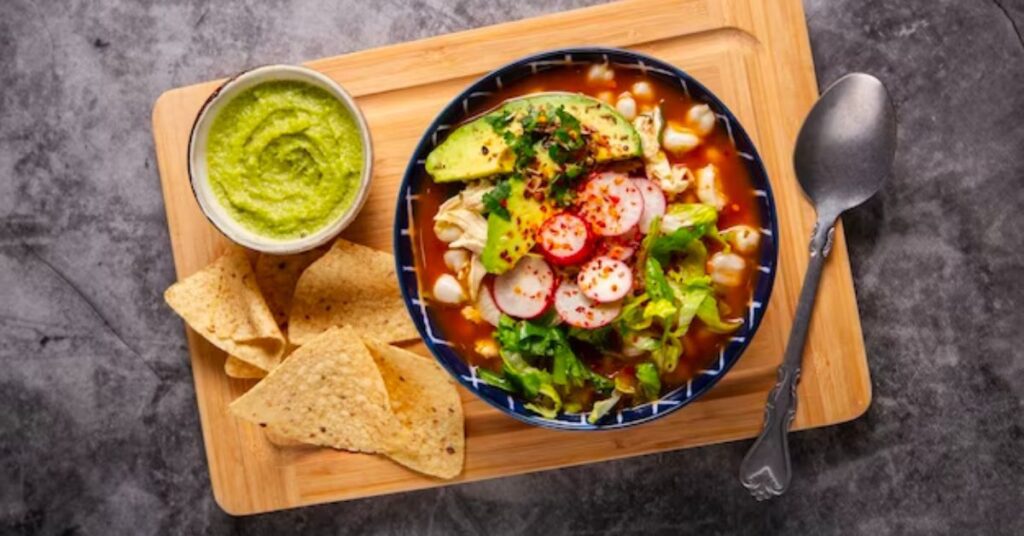
Ingredients:
- Fresh bell peppers (choose various colors for visual appeal)
- Guacamole (store-bought or homemade)
Instructions:
- Wash and slice fresh bell peppers into strips or sticks.
- Arrange the pepper strips on a plate.
- Serve with a side of guacamole for dipping.
- Dip a pepper strip into the guacamole and savor the creamy and slightly spicy combination.
- This snack offers a mix of textures and flavors.
Day 7
Breakfast: Cottage Cheese with Pineapple
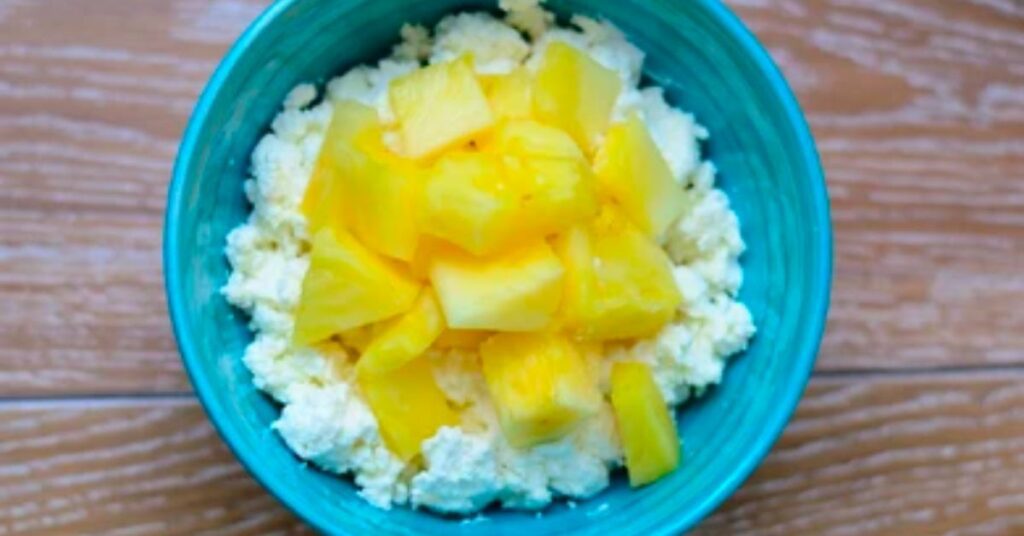
Ingredients:
- Cottage cheese
- Fresh pineapple chunks
Instructions:
- Serve cottage cheese with fresh pineapple chunks.
Lunch: Roast Turkey and Veggie Bowl
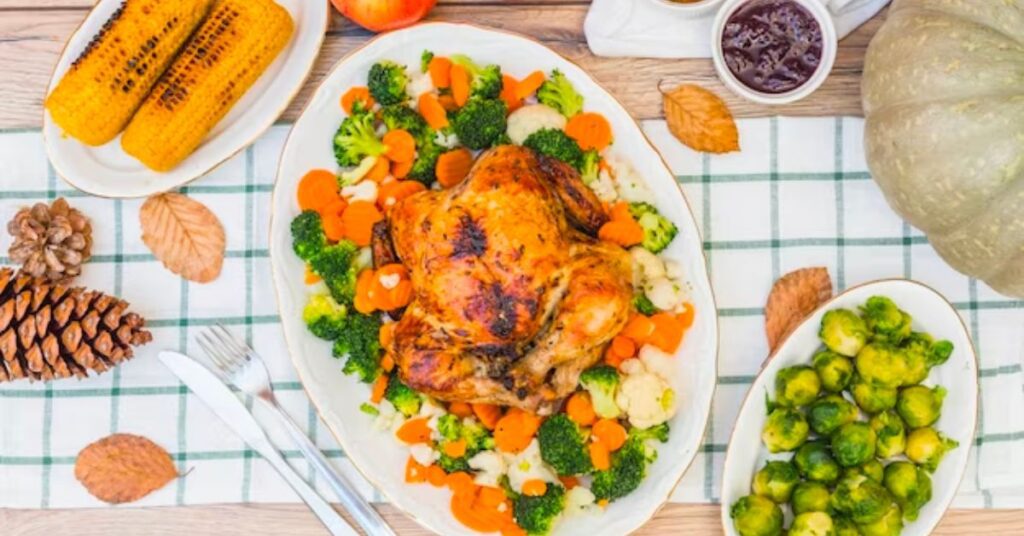
Ingredients:
- Roast turkey slices
- Mixed roasted vegetables
- Light gravy or sauce
Instructions:
- Combine roast turkey slices with a variety of roasted vegetables.
- Drizzle with light gravy or sauce.
Dinner: Baked Tilapia with Green Beans
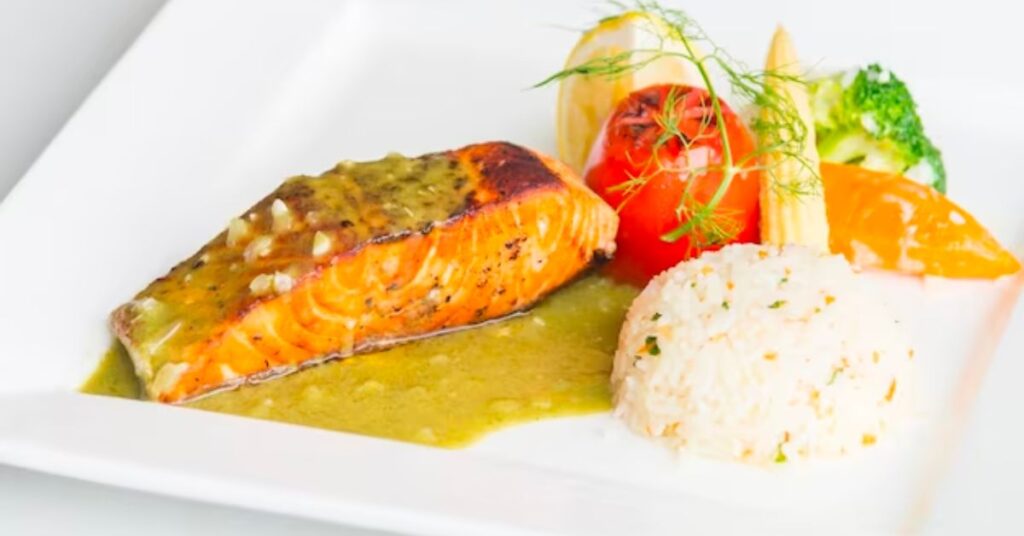
Ingredients:
- Tilapia fillet
- Green beans
- Lemon juice, garlic, and herbs
Instructions:
- Season the tilapia with lemon juice, garlic, and your choice of herbs.
- Bake until the tilapia flakes easily.
- Serve with steamed green beans.
Snack: Mixed Berries

Ingredients:
- Fresh mixed berries (e.g., strawberries, blueberries, raspberries, and blackberries)
Instructions:
- Wash the mixed berries thoroughly and let them dry or pat them gently with a paper towel.
- Place the mixed berries in a bowl or container.
- Enjoy this simple and refreshing snack of fresh mixed berries. No additional ingredients or preparation needed!
Conclusion
Congratulations on exploring the essential role of nutrition in your bodyweight workout journey. It’s not just about sweat and effort; it’s about fueling your body to reach new heights.
Remember, nutrition is your secret weapon. Tailor your meal plan to your goals and preferences, finding the perfect balance of protein, carbs, and healthy fats.
Timing your pre-workout and post-workout nutrition matters. Use these strategies to improve your performance and recovery.
Your meal plan is your ally, not a restriction. Embrace it, enjoy it, and make it a part of your daily routine.
As you continue your bodyweight workout adventure, keep pushing your limits and savor every victory. Your success isn’t just physical gains; it’s also about discipline, resilience, and commitment.
You’re the author of your story, and nutrition is the ink that brings it to life. So, keep moving forward, stay focused, and make your bodyweight workouts the most incredible journey. Onward to your next adventure.

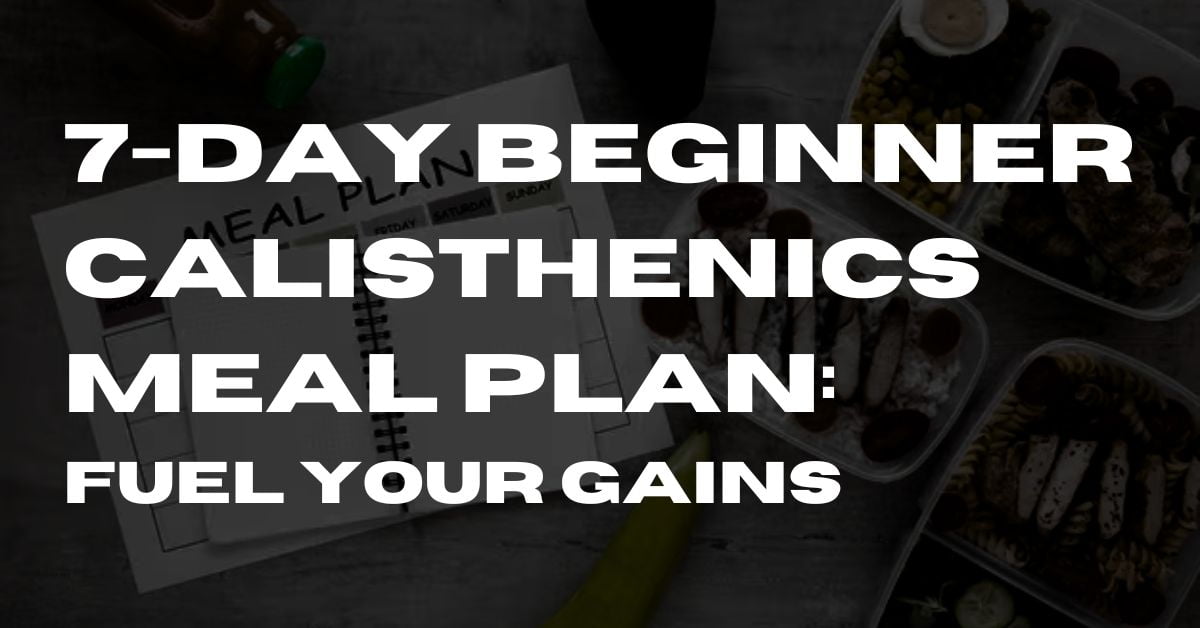
I truly appreciate your meal ideas.
I just like the helpful information you provide in your articles
I truly appreciate your technique of writing a blog. I added it to my bookmark site list and will
I do not even understand how I ended up here, but I assumed this publish used to be great
Great information shared.. really enjoyed reading this post thank you author for sharing this post .. appreciated